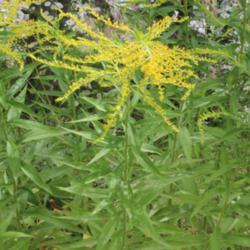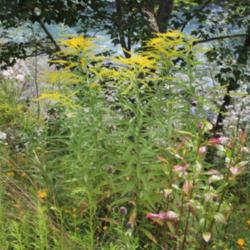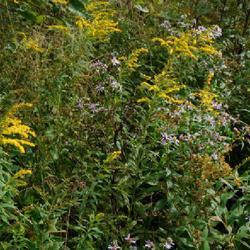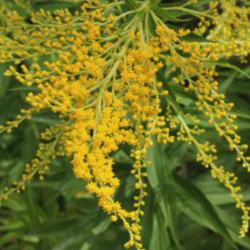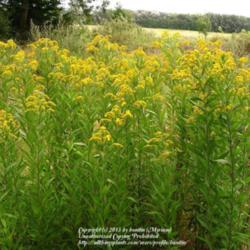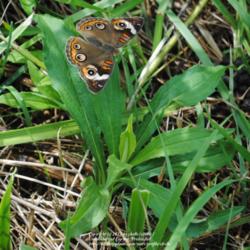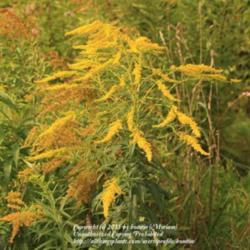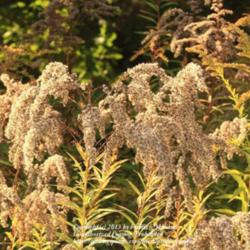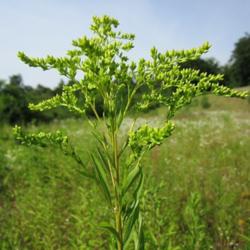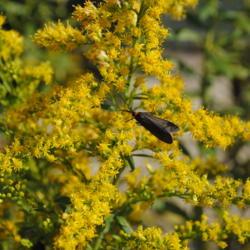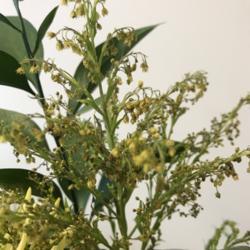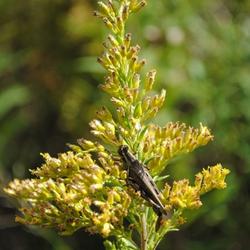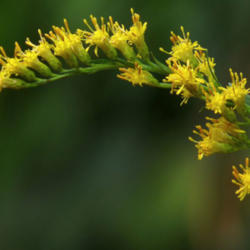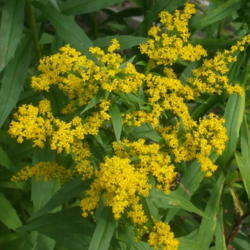Posted by
Chillybean (Iowa - Zone 5a) on Oct 11, 2015 4:47 PM concerning plant:
This plant is native to much of North America, except for a handful of south-eastern states and a portion of northern Canada. It is one of the more aggressive Goldenrods. In prairie restorations it easily can take over.
This plant is often blamed for allergy sufferers' misery. It is not the Goldenrod's fault, but the Ragweed that also blooms at the same time. Goldenrod needs insects for pollination, but the Ragweed is wind pollinated.
This is a later-blooming plant, so it is an important food source for a variety of bees, wasps, and other beneficial insects. The wasps and soldier beetles attracted to this plant help control many pest insects. The nectar feeds many butterflies and moths. Birds and small mammals eat the seeds. Deer and rabbits will on occasion eat the foliage.
We planted a patch of native seeds this spring, and kept it mowed down. This plant grew so much faster than anything else, so we mowed around this plant. It was unidentified for much of the summer, until I noticed some red aphids of varying sizes on it. Those Red Goldenrod aphids ended up helping us give this plant a name. They are a native species of aphids, so we let them go and watched what happened. The plant was large enough that we figured it could sustain any damage. It did this and more. It bloomed profusely late in August, creating such a beautiful display.
I grew up in Nebraska and heard of the state flower, Goldenrod. The most I knew, it was a color in a box of Crayons. It wasn't until moving to Iowa that I gained an appreciation for this flower and the large amount of life it attracts.
Posted by
ILPARW (southeast Pennsylvania - Zone 6b) on Feb 23, 2018 12:20 PM concerning plant:
This Canada Goldenrod is a very common forb in meadows and prairies from Newfoundland to southern Manitoba and southward into the South of the US. This is one of the Goldenrod species that has survived the big change in eastern North American meadows from being all native before settlement to having more European plants in composition than American natives. It is one of the goldenrods of the Plume-like, Parallel-veined leaved species that includes the Tall Goldenrod, the Sweet Goldenrod, and the Late Goldenrod. Have fun trying to tell them apart. The leaf margins are sharply toothed most of the leaf length. It spreads powerfully by the underground roots (rhizomes) and is not desirable in standard gardens. I don't know of any nurseries selling any. Like other Goldenrods, it is an excellent pollinator plant for many insects.
Posted by
KFredenburg (Black Hills, SD - Zone 5a) on Jun 23, 2020 8:52 PM concerning plant:
Habitat: meadows and open forest. Range: across Canada and throughout the United States.
Posted by
Newyorkrita (North Shore, Long Island, NY ) on Sep 29, 2011 2:34 PM concerning plant:
All Goldenrod is very attrective to honey bees, bumblebees and other pollinating insects. Also, an excellent choice to add vivid fall color to the garden, especially if you are looking for an alternative to the usual mums.
Posted by
Catmint20906 (PNW WA half hour south of Olympia - Zone 8a) on Aug 8, 2014 7:54 AM concerning plant:
Solidago canadensis is a key nectar source for Monarchs and other butterflies, and is a Monarch Way Station plant.
According to NPIN, this plant has special value to native and honey bees and supports conservation biological control by attracting beneficial insects to the gardens.



